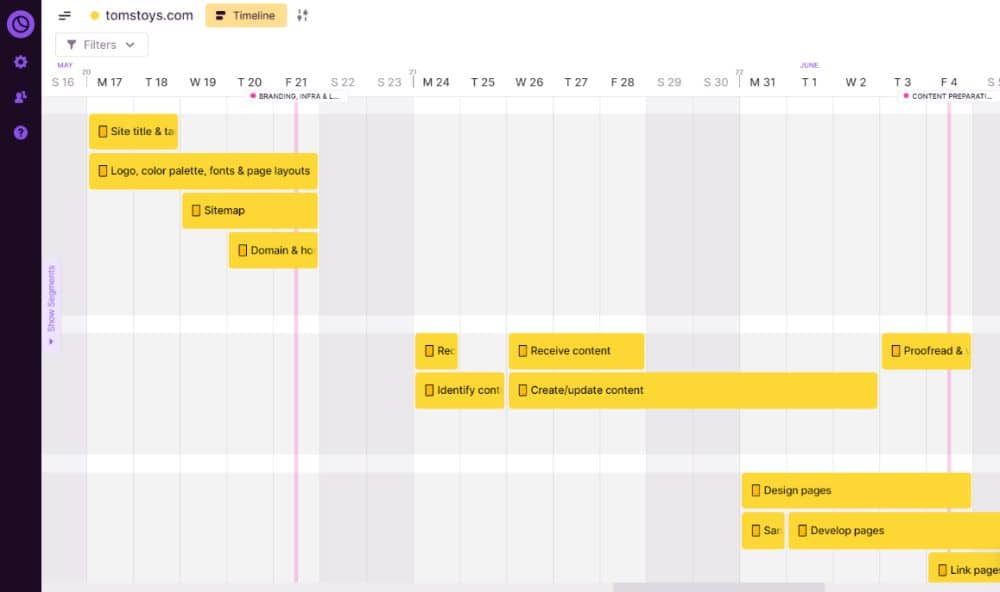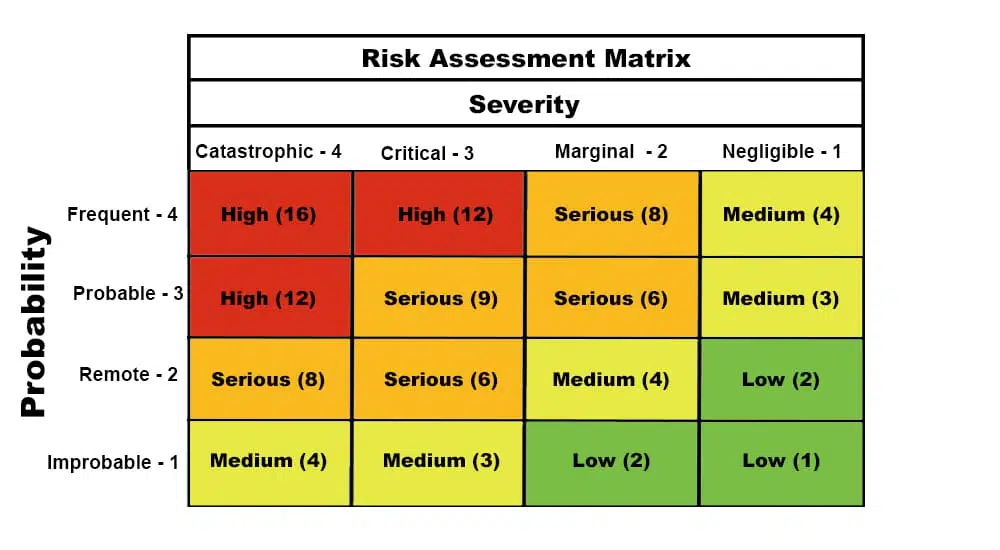Project Controls narrow the differences between a project’s plan and its execution. As a result, you stay within budget and meet project deadlines.
Projects need to meet goals and expectations.
A project plan helps you chart out a path towards meeting these goals.
However, in the real world, things hardly go according to plan. Unforeseen events and circumstances throw a spanner in the works. And are often enough to derail your project’s timeframe as well as budget.
In this article, you’ll learn everything you need to know about how to use Project Controls to deliver your project on time and within budget.
What are project controls?
Project Controls are project management processes that help you keep your project deliveries on time and within budget.
The goal of a project control process is to:
- Comply with the project’s scope
- Minimize project budget overspend
- And, deliver within the project schedule
It’s logical to assume that project controls are implemented during the tracking and monitoring phase of a project.
However, that’s not the case.
Experienced project managers start thinking about project controls early during a project’s lifecycle to mitigate risks and keep the project on track.
How are project control processes different than project management?
Project control is a subset of project management activities.
Managing a project involves activities across managing people, processes, tools, and deliverables. On the other hand, project control is concerned with controlling project costs and timeframes.
Unlike a project manager, a project controller only acts as a consultant to the team. They advise the team and the project manager on possible cost and schedule issues.
| Project Management | Project Control |
|---|---|
| Involves activities that touch all aspects of a project including people, processes, tools, etc. | Only involves activities related to cost and schedule control |
| Led by a project manager | Led by a project controller |
| The project manager leads as well as is a part of the project team | The project controller only advises the team about possible cost and schedule slippages |
Importance of project controls
Understandably, any overruns in a project’s budget and schedule will result in project failure. According to a KPMG global survey, only 36% of organizations deliver projects on budget.
Project control processes ensure project success by staying on the project’s schedule and within the budget.
In addition, project controls also impact other critical factors that determine the success or failure of a project. These include:
- People: Control processes ensure that the right people are available at the right time. Plus, they foster accountability in the project to deliver on time.
- Quality: Controlling costs and timeframes requires you to comply with the project’s scope. This prevents scope creep as well as improves delivery quality by avoiding rework.
5 project management controls that help deliver successful projects
Regardless of the size of a project, every project has a few key elements that help establish control over a project’s delivery. Here’s a quick summary:
| Project control | How does it help? |
|---|---|
| Project scope | Scope compliance helps minimize the gap between planned and execution timelines |
| Project schedule timeline | Helps improve visibility into a project’s progress as well as keeps stakeholders in the loop |
| Resource management plan | Helps stay on top of resource availability, capacity, and workload |
| Risk management plan | Helps identify and mitigate project risks and challenges early in the project’s lifecycle |
| Key Performance Indicators | Help monitor project progress and track performance against the baseline |
Let’s look at each project control in brief:
1. Project scope
The project scope is a written document that creates an agreement between the project’s team and clients.
Created in the initial stages of project planning, the project scope documents the deliverables that the project team must deliver to the clients. Where measurable it also documents the quality parameters of the deliverables.
For example, a digital marketing agency may define the scope of its monthly services as:
- Performance report for the previous month sent on the first working Monday of each month
- 4 blog articles of 1000 words each delivered every Tuesday
- 5 dofollow links of 30+ Domain Authority, delivered at the end of each month
On the client’s side, it’s understood that any changes to the scope will result in changes to the project’s costs and timeline. That’s why it’s critical to document your project scope and get it signed off by the client.
To speed up creating your project scope, consider using these contract templates.
Failure to adhere to the project scope or frequently changing it results in scope creep. Eventually, uncontrolled scope creep results in budget and schedule overruns, leading to project failure.
🧠 Further reading: Project Scope Creep: How You Can Banish It For Good
The scope document ensures that both clients and project teams adhere to the project’s goals. Thus it serves as effective control over project budget and timelines.
2. Project schedule timeline
A project’s schedule can be represented in many ways including a simple spreadsheet, a calendar, or a timeline.
Of these, a timeline is the best way to visualize a project’s schedule. In addition, a timeline improves visibility into a project’s progress and keeps the stakeholders up to date.
For example, a website design and development project timeline may look something like this:

A timeline is a graphical representation of the project’s tasks and milestones on a horizontal timeline.
On the timeline:
- The horizontal axis represents the project’s dates
- Tasks stretch from start to the end date on the body of the graph
- Milestones are marked on specific dates to represent crucial checkpoints in the project
🧠 Further reading: How To Create A Project Timeline In 8 Actionable Steps
The project schedule timeline helps you minimize the gap between the project plan and its execution.
3. Resource management plan
You’ll need resources to execute your project plan—people, tools, and budget. For example, a content marketing campaign will need the following resources:
| Project activity | Resources needed |
|---|---|
| Monthly performance reporting |
|
| Blog writing |
|
| Link building campaigns |
|
A resource management plan helps you:
- Identify resources: Review the project timeline to understand the resources you’ll need during the project’s schedule. Record these requirements in the resource plan.
- Allocate resources: Look at your existing resources and plan to hire new resources or outsource where required. Allocate these resources to each activity on the timeline.
- Make contingency plans: Review your team’s vacation plans and other resource-related risks. Make backup plans to minimize the impact on the project’s timeline.
🧠 Further reading: Project Resource Management: A Simple Guide For New Managers
People are the most “at-risk” resources. It’s time-consuming to hire new people as well as expensive. A resource control process helps you minimize the impact of resource risks on your project’s costs.
4. Risk management plan
Unseen risks can toss away your project estimates.
A risk management plan documents potential risks and their solutions during the project’s entire lifecycle. It documents the entire risk management process, including:
- Identification: Review your project timeline and resources allocated to identify the risks associated with each task. Record each identified risk.
- Evaluation: Analyse all risks to evaluate their impact on the project’s costs and schedule. A risk assessment matrix can help you classify each identified risk.
- Mitigation: Risk mitigation involves reducing the impact of the risk on the project’s budget and timeframes.

There are several methods to ensure risk control, including:
- Risk avoidance
- Asset protection
- Risk reduction
- Risk isolation
- Duplication
- And, diversification.
🧠 Further reading: How to Do Project Risk Management
When you can identify risks early in the project’s lifecycle, you can make plans to handle them. As a result, if and when risks arise, their impact on the schedule is minimal.
5. Key Performance Indicators (KPIs)
KPIs are a part of project performance management. On a very basic level, performance management is the process of monitoring a project’s success.
But how do you monitor whether a project progressing as expected or headed towards failure?
That’s where KPIs come in. KPIs are project parameters that your monitor constantly against an already established project baseline.
In the case of schedule, it’s your project’s timeline.
And for monitoring the budget, you can compare task estimates against actual time spent using a time tracking tool such as Toggl Track.
Any large deviations from the KPI values should be immediately reviewed to measure the impact on the project’s progress.
When to use project controls?
While project controls are defined during the initiation phase of a project’s lifecycle, they are reviewed and used throughout the project.
Here’s a quick summary of when you should use project controls:
| Project phase | Project control actions |
|---|---|
| Project initiation |
|
| Project execution |
|
| Project closure |
|
Stay in control to deliver successful projects
Project controls are a crucial aspect of the project management effort. They help you to:
- Control project costs and timeframes
- Improve delivery predictability and take timely actions to reduce risks
- And, as a result, ensure project success
It’s indeed a challenging task to control every aspect of a project.
But, when you put in place solid project controls, you boost the chance of project success. In other words, if you understand project controls and know how to use them, you can meet your business’ project goals. Better yet, you might exceed them.
Jitesh is an SEO and content specialist. He manages content projects at Toggl and loves sharing actionable tips to deliver projects profitably.


